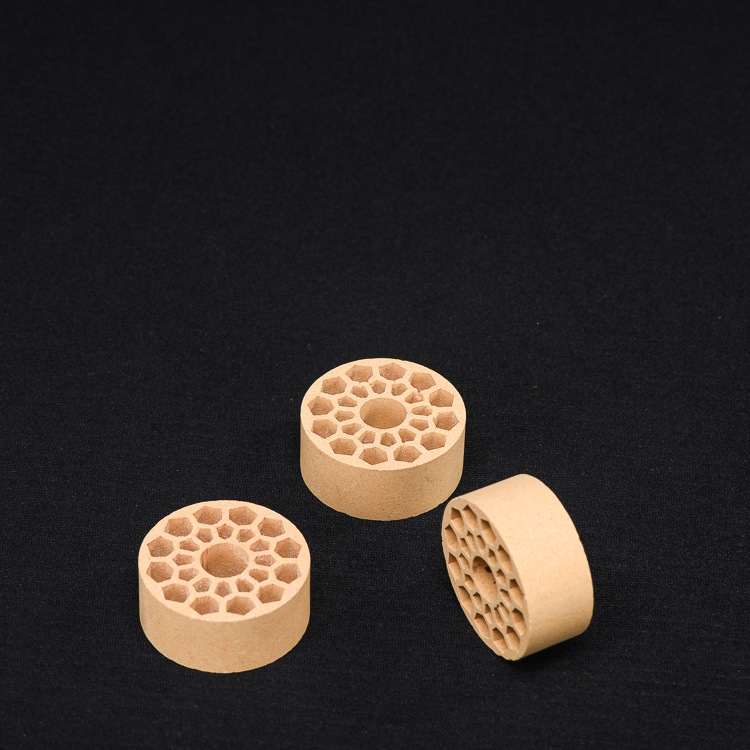Alumina Refractory – The Unsung Fireproof Hero of Industry
High alumina refractory bricks protect industrial furnaces from high temperatures, corrosion, and erosion. They are indispensable in the steel industry and help enhance productivity and cost savings. This article will cover the basic information about these materials, including their properties and applications.
The refractory material used in the aluminum smelting industry is based on calcined bauxite. This material is resistant to the aluminum bath and salt fluxes. It also offers good thermal stability and chemical slag erosion resistance.
It is a fireproof material
Alumina refractory materials are frequently employed in industrial settings with high heat conditions to protect metal alloys and building components from overheating, such as building components made of copper alloy. Their excellent resistance against high temperatures, abrasion, chemical attack and installation makes them simple and cost-effective solutions that require few repairs; their low maintenance costs reduce downtime on job sites, save labor costs and cut energy consumption significantly.
Insulating properties of high-alumina refractory are particularly advantageous in furnaces and kilns, helping prevent damage caused by intense heat produced during production processes while saving energy through reduced energy loss from escaping structures. Due to these advantages, high-alumina refractory is quickly becoming the material of choice when lining kilns or furnaces with it.
High-alumina castable refractories offer good resistance to molten aluminium (Al) and its alloys, but are susceptible to corrosion above the metal line in melting furnaces due to reactions that cause volume contraction, leading to corundum formation that leads to corrosion. Researchers are actively working on ways to enhance refractory performance.
One option for improving corrosion resistance of refractory materials and helping prevent Al contamination above metal lines is adding non-wetting additives (NWAs). NWAs can prevent spinel formation that contributes to Al2O3 corrosion. By doing so, these NWAs could improve corrosion resistance of these materials while simultaneously helping avoid Al contamination above their metal line.
It is a thermal insulator
High alumina refractory insulation material is widely utilized in metallurgical furnaces, ceramic kilns and glass tanks for their extreme temperatures, low thermal conductivity and resistance to corrosive substances like molten metal and slag corrosion. Furthermore, this type of material provides thermal shock resistance.
Material designed for use in metallurgical furnaces and foundries. With low expansion up to 1540oC and excellent resistance to slag attack, this material makes an excellent choice for tight bonds with other refractory materials and safety linings in ladles and castables.
Bubble alumina is an efficient insulator with high hot strength and low thermal conductivity, offering excellent hot strength while remaining thermally inert. It features twice the bulk density of premium-grade alumina bricks, making it suitable for structural applications requiring insulation capabilities as well as being microwave and RF transparent.
This refractory is composed of coarse super-calcined alumina aggregates and reactive calcined alumina fines that have been super-calcined at high temperature, then mixed together using reactive calcined alumina fines from Morocco geomaterials, then directly-bonded microstructure with predominate alumina-corundum phase as its major constituent (white in color with round pores for superior erosion resistance to flowing liquid steel) as well as very dense matrix of this phase that outshines other high alumina products such as silica bricks in terms of superior insulation properties. Figure 6 displays this microstructure at low and high magnification by optical microscopy respectively from Moroccan geomaterials geomaterials used as source.
It is a chemical insulator
Alumina refractory materials feature excellent chemical resistance, making them capable of withstanding the corrosion caused by metals such as copper and molten slag, high temperatures from industrial processes, as well as being cost-effective choices for various applications such as vessel insulation and kiln insulation. This material makes an excellent insulating choice.
Alumina Refractory products provide excellent insulation due to their hollow alumina spheres bound together by strong cement. Their light construction offers thermal insulation without significantly diminishing mechanical strength – an excellent combination. Alumina Refractory can also withstand high-temperature environments like furnaces, chemical plants or continuous casting tundishes without losing strength over time.
Alumina refractory is composed of various raw materials such as bauxite and chamotte, typically produced through dry pressing at high temperatures before firing to cure it. Firebrick quality can be measured using standard tests such as thermal conductivity, cyclic thermal shock test, open porosity measurement and firing shrinkage measurements. These tests are crucial in order to predict the performance of refractories at high temperature and under stress, and identify any defects or faults within its structure. Furthermore, scanning electron and binocular microscope analysis of its microstructure can further reveal its crystalline phase structure, particle size distribution patterns, chemical composition and chemical makeup.
It is a wear-resistant material
Alumina refractory materials are an essential component of steel, cement, and petrochemical production processes. They help ensure the proper function of equipment used in these industries, reducing downtime and maintenance costs. In addition, alumina refractory materials are durable and have good wear resistance. These properties allow them to withstand high temperatures and harsh chemical environments.
In order to improve the corrosion resistance of alumina refractories, researchers have developed new types of materials based on nanotechnology. These materials contain an oxide of boron, which makes them more chemically stable than free boron. They also contain a large amount of crystalline alumina, which helps them resist degradation from thermal shock. These materials are currently being used in the production of cement, glass, and other industrial products.
Refractory material selection is critical for the stability of a refractory at elevated temperatures. These materials must have a high melting point and be thermally stable, meaning they do not melt or decompose at high temperatures. They must also have a low coefficient of expansion and be chemically resistant to corrosion and erosion.
There are several types of alumina refractory materials, including mullite and corundum. These refractory materials are particularly suitable for electric furnace roofs and blast furnace superstructures. They are also used in continuous casting tundishes. These refractories have the highest alumina content, making them extremely strong and resistant to loading.
